How To Plant Garlic Step-By-Step
Oh my gosh, have you ever had the chance to plant garlic? Once you grow garlic there is no going back to buying garlic at the stores. It tastes so much better as a fresh product and is so easy to grow, anyone can do it. Did you know that within those garlic bulbs is a chemical called allicin? That’s where the aroma comes from. I bet you can almost smell the garlic, right?
I’m updating this post because a dear reader and friend, Jackie P., sent me some of her homegrown garlic. I am beyond honored to receive these Transylvania soft neck garlic bulbs and these Music hard neck garlic bulbs. I can’t wait to plant some of them, and of course, use them in many meals now and in the future! Thank you, Jackie!
This is what Jackie told me, “We grew about 200 bulbs this year. I ordered a new heirloom, Old German, and it will be delivered this fall. We plant before the first frost. It lies dormant over the winter. Pops up in the spring. Plant cloves 2 inches down, 5 inches apart. Cover with 5 inches of straw above the soil level.
Leave the straw on it in the spring. If you have a drought, the straw will keep moisture in there. Dig up carefully the last week of June. If a prediction of lots of rain is coming, dig it up right before that. Sitting in water destroys outer skins and makes it hard to dig up.”
I quote Wikipedia, “When fresh garlic is chopped or crushed, the enzyme alliinase converts alliin into allicin, which is responsible for the aroma of fresh garlic. The allicin generated is unstable and quickly changes into a series of other sulfur-containing compounds, such as diallyl disulfide.”
Mark and I are pretty sick with an upset stomach, and I’m sure it has to do with the amount of garlic we put in our meals. LOL! I make a garlic soup to take to people who are sick to help ward off severe colds and flu. When you feel that scratchy throat feeling, you may want to make this soup. I’m not saying it will cure a cold, but the warm soup may help clean out the gunk in your throat and sinuses. My recipe is at the bottom of this post.
In case you missed this post, Garlic: Everything You Need To Know
How To Plant Garlic
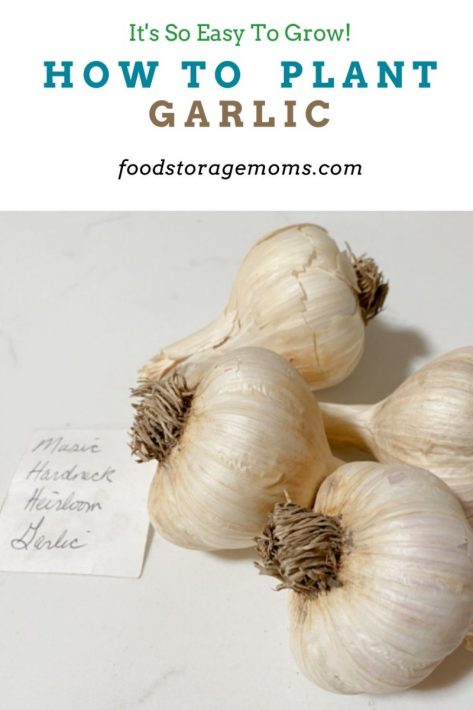
Buying Seed Garlic
My favorite place to order seed garlic is where I buy all of my seeds: SeedsNow Be prepared for sticker shock when you see the prices of seed garlic. Just remember, after the first investment, you can save some of the larger bulbs for seed next year. If you plan correctly, you will always have seeds to plant year after year. Just buy right the first time.
I learned that the “seed” of the garlic bulb is actually the “clove” we all use to flavor our meals. It’s the individual clove you separate from the bulb that is planted as a seed.
Two Categories of Garlic:
Hardneck Garlic
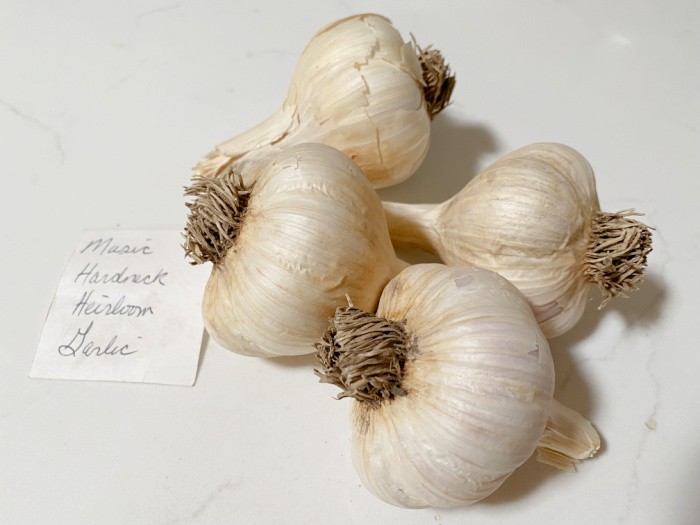
This type of garlic will have green shoots with flowers and stalks called “scape” a few weeks before the bulb is ready to harvest. The scape is the bud of the garlic and is edible. You want to remove the flowers/scape to allow the plant to devote its energy to growing a larger bulb. This one is perfect for cold climate areas. You may want to check your Zone for planting, they are good to grow up to about Zone 6. Check Your Zone
You will get two harvests if you plant them at the right time. I like to order the seed garlic online to get the very best ones to plant. If you have a good local nursery they may have the seeds that work for your climate. Hardnecks don’t store as long as soft necks, so go ahead and eat them within 3-6 months. The skins come off easier than the soft neck varieties.
Softneck Variety Garlic
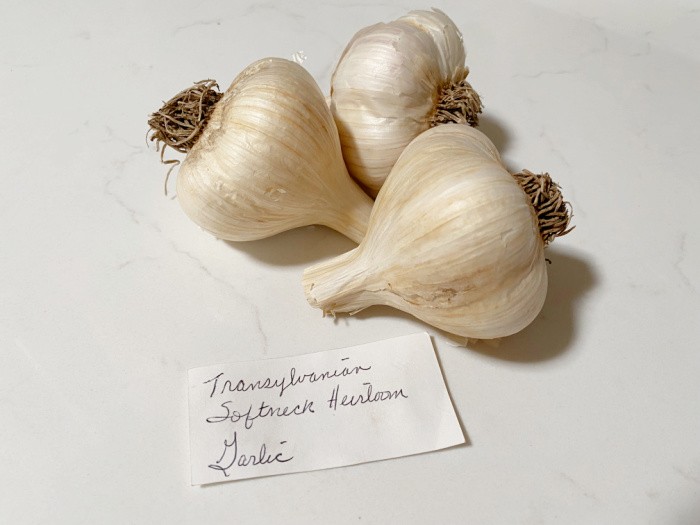
This variety typically is what you find in grocery stores. It usually comes from California and Mexico, or other warm-climate areas. The bulb has a mild flavor. This one braids really easily and makes a great gift for friends and family when braided. While reading this post, Mark asked me what braiding meant and why people would do that.
I told him that if you braid the garlic after it’s harvested it tends to last longer than if you put it in a bag for storage. For those who love to garden, it’s also a way to “dress up” the garden and make it more aesthetically pleasing. If you want to learn more, put braiding garlic in your browser and read all about it. Check Your Zone
When to Plant Garlic
The best time to plant garlic in most areas is in the fall, about 4-6 weeks before your very first frost. Here in Southern Utah, our planting date is the middle of October. I’m in Zone 8A. Please check your Zone for planting times. This is when I really wish I had a Green House. I would love to plant year-round. We usually harvest in June.
Fall Planting
Plant garlic cloves in mid-fall in a sunny location in dark loamy soil, and remove any visible rocks. Be sure to pull any weeds so the plants don’t have to fight for survival. After you separate the garlic bulb into cloves, plant one individual clove 4-6 inches apart and about 1-2 inches into the ground with rows about 2 feet apart. Water the soil after planting if the soil is dry to the touch. Plant the pointed end up and the blunt end down. Put down 6 inches of mulch for winter protection.
The plants will go dormant naturally over the winter and the mulch helps keep the soil temperatures alternating from freezing and thawing. Once the ground freezes add another layer of mulch. The goal of planting in the fall is to give the bulbs a head start by sending out roots. Once the soil starts to warm in the spring the plants start growing again. Note that garlic grows best when it can receive six full hours of full sun each day.
Spring Planting
You can plant garlic cloves as early in spring as you can once the soil has thawed. Turn the soil using a garden fork, shovel, or another handy garden tool when your soil can be worked effectively. It’s usually about the same time as you plant onion sets. After you separate the garlic bulb into cloves, plant one clove 4-6 inches apart and about 1-2 inches into the ground with rows about 2 feet apart. Water the soil after planting if the soil is dry to the touch. Plant the pointed end up and the blunt end down. Note that garlic grows best when it can receive six full hours of full sun each day.
Depending on your location and when the cool weather tends to warm up, spring planting can mean a later harvest of the garlic, it all depends on temperature, sun exposure, and the quality of the soil.
Where to Plant Garlic
Please choose a spot in your garden or raised garden bed where garlic or onion has not been planted before. Garlic takes up very little space in the garden. Make sure the water will drain from the plants, they don’t like standing water, which may cause disease and rotting to occur. The soil must be fertile, and like I said, well-drained.
Garlic doesn’t do well in hard clay soils. The bulb, which is the root of the plant, needs room to not only get longer in size but also wider. If the soil is too hard the plant’s bulb can’t expand and grow as is needed for a healthy plant and successful harvest. No matter what soil you have, you’ll need to work your compost into the soil and the best fertilizer has a 10-10-10 composition. Yes, nitrogen is important for garlic to grow and mature successfully.
Please don’t let the soil get too much water, they need to be watered, but not too much water. The soil must not be constantly wet or it will affect the outer “skin” of the bulb. Be sure to prepare your soil with some good organic soil. You may want to look at my post on Replenishing Your Soil.
As mentioned above, after you separate the garlic into cloves plant one clove 4-6 inches apart and about 1-2 inches into the ground with rows about 2 feet apart. Water the soil after planting if the soil is dry to the touch. Plant the pointed end up and the blunt end down.
When you plant garlic you can usually harvest your garlic bulbs in 6-9 months, depending on the variety you choose to plant, the weather conditions, and how well the plants are cared for as they grow.
Garlic Harvest and Storage
You will know when the garlic is ready to harvest when most of the leaves have turned brown. You may want to set aside some of the largest bulbs for next year’s planting. Each bulb typically has 5-10 cloves and each individual clove equates to a new plant the following year.
Please remove the dirty soiled skins and cut the tops off at 1-2 inches above the garlic bulbs and store the loose bulbs in a dry, cool, and well-ventilated place in baskets. If you want to braid the stems and hang them on strings, please bend the stem over about 2-inches above the ground to dry the stems before braiding.
Garlic Chicken Noodle Soup
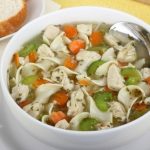
- 2 cans of chicken (12.5 ounces each drained or substitute 2 cups of cooked chicken)
- 6 cups water
- 1/4 cup Better Than Bouillon Chicken Base or substitute equal amounts of water with chicken broth
- 3/4 cup freeze-dried onions or 1 fresh onion chopped into bite-size pieces
- 3/4 cup dry dehydrated carrots or 1-1/2 cups diced fresh carrots
- 3/4 cup dry freeze dried celery or 1-1/2 cups diced fresh celery
- 1 teaspoon dried parsley
- 1 teaspoon dried sweet basil
- 1 teaspoon pepper
- salt to taste
- 1 package Grandma’s frozen egg noodles (11-ounces cooked and separated as directed or boil your pasta of choice)
- 2 cans cream of chicken soup undiluted – optional
- 1 bulb fresh garlic
- 1 bunch fresh parsley
-
Combine all ingredients in a slow cooker for 6-8 hours, BUT add the Grandma’s Noodle the last two hours or they will be mushy. Enjoy!
What kinds of pests are harmful to garlic plants?
Although garlic plants are pretty hardy, they can be susceptible to some garden pests. Some common pests that can attack your garlic plants are:
Leafminers:
I wasn’t familiar with this insect. It leaves curled white eggs on the underside of the garlic plant leaf. Like house flies, the eggs hatch into maggots, worm-like larvae that like to tunnel into the leaf and chomp on the plant as they move along.
It’s important to keep the area around your garlic plants weeded and well-mulched. All weeds and other debris should be disposed of. If you see the eggs attached to the leaves, pull the leaves off the plant gently so you don’t drop the eggs on other leaves. Be sure to dispose of the affected plant leaves away from your garden.
There are organic spinosad-based insecticides you can buy at your local nursery that can be used to keep them from infesting your whole garden.
Garlic Bloat Nematodes:
Another pest I hadn’t heard of. they are actually roundworms that love to eat the whole garlic plant. The infected plants will show signs of wilting where the leaves turn yellow. The name comes from the shape of the bulb generated by the infected plant since the bulb will swell up and look bloated.
Since nematodes enjoy both living and dead plant matter, be sure to keep your garden free of dead plants, including weeds. The nematodes can attach themselves to your garden tools and even your shoes. Plan on cleaning off the tools often and then treat them with a neem-oil-based insect spray.
Bulb Mites:
These small pests actually attack the garlic bulbs directly. They like living between the cloves. You can tell the plant has been infected by looking for small and twisted leaves, along with raised bumps on the bulbs.
The organic neem-oil spray is also good for treating these pests. You can make your own by adding one teaspoon of neem oil and 1/2 teaspoon of dish soap to each quart of warm water. Make sure they are well mixed before putting the mixture in your spray bottle. Spray each affected plant with this oil until they appear damp.
What is the best month to plant garlic?
Since every location has different frost start dates, different temperatures, and different levels of humidity, you’ll need to determine when best to plant in your specific area. Note in my comments above, that the most common time to plant garlic is in the fall, but many gardeners like doing so in the spring. Remember that garlic likes more dry and warm climates, so if you live in a hot and humid area you may have more difficulty with your plants.
You really can’t say that any time of year would work. You have to give the fall plants time to adjust to the soil, water conditions, and temperatures before they go dormant. Digging in frozen soil and having the compost and mulch work properly during the winter months isn’t going to work. For spring plantings, you need to give the plant enough time to grow, so look for a 6-9 month growing cycle when planting in the spring.
How deep should I plant the garlic cloves?
My research, and from personal experience, tells me that two inches from the soil level to the top of the clove works best. Some people will tell you to space them five inches apart, but others think they need more room, so they suggest 6-8 inches. You for sure want the bulbs to have plenty of room to grow and expand as they mature. If done right, you really shouldn’t have to “thin” them during the growing process.
As a general rule, if you are going to have multiple rows of plants, each row should be 1-2 feet apart, if you have the room.
How often should I water the garlic plants?
All plants need water to grow, but garlic doesn’t do well in very wet conditions. Your soil should provide good drainage, and you’ll want to water sufficiently to keep the soil sparingly moist. As the summer continues, you’ll want to water less and give the bulbs time to grow. You’ll harvest when the full leafy part of the plant has turned yellow.
Are garlic plants annuals or perennials?
As mentioned above, one of the advantages of garlic plants is that you can take the bulbs from one year’s harvest, and use those bulbs the next year. It is suggested that your rotate crops and not plant garlic in the same spot each year. If you have much space at all that rotation sequence shouldn’t be too difficult.
Make sure you save the larger bulbs for the next year’s planting since large bulbs make for large cloves, which in turn make for larger plants.
Annuals, you plant each year. Perennials are those plants that you plant once, clip them back depending on the plant and they just keep producing year after year. Garlic is kind of a combination in my mind, but that’s my opinion. I love garlic, what can I say?
Final Word
Let me know when you plant garlic in your area, and how you store it. Please tell me the favorite garlic variety you like to plant. Thanks for being prepared for the unexpected. May God bless this world.

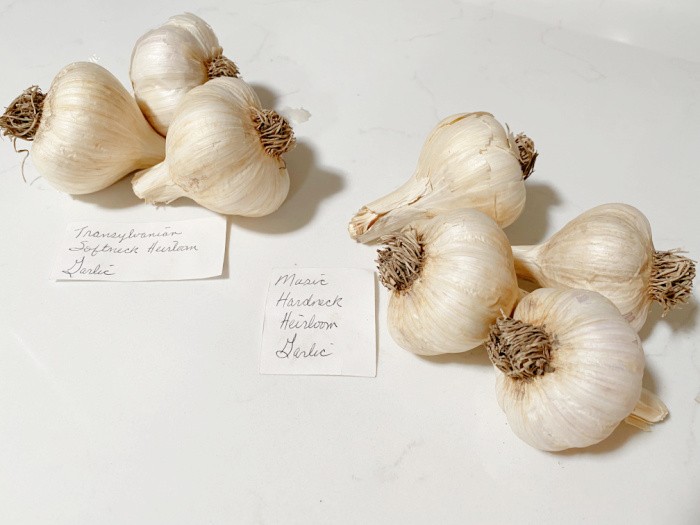

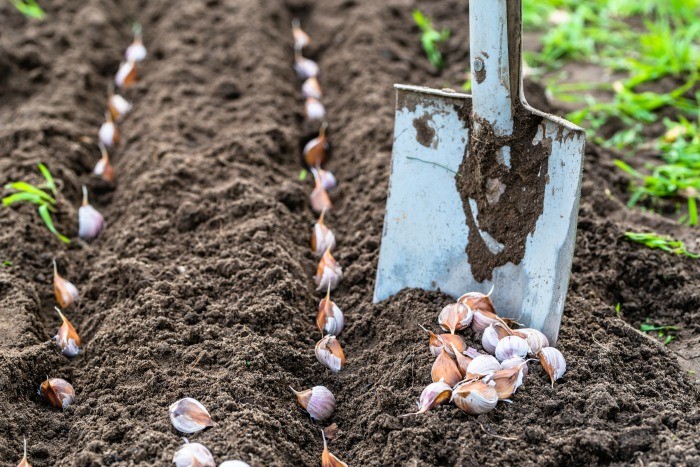
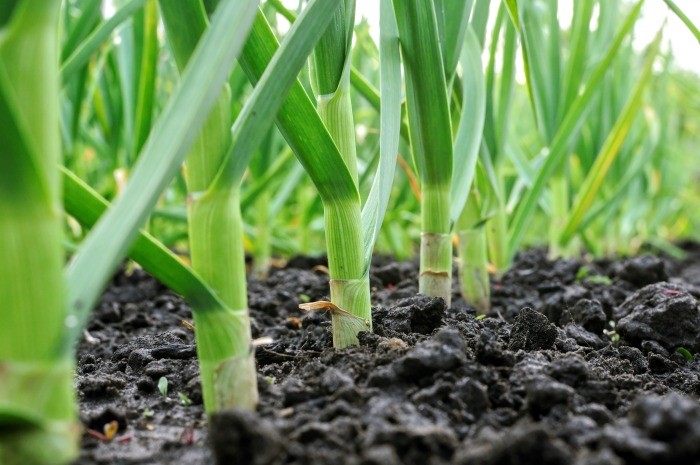
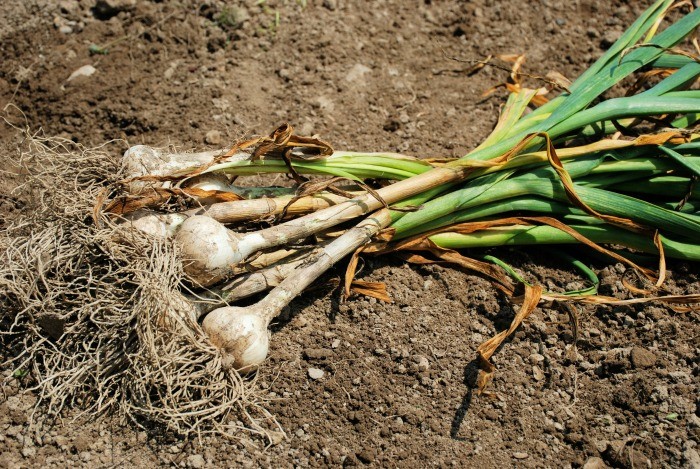
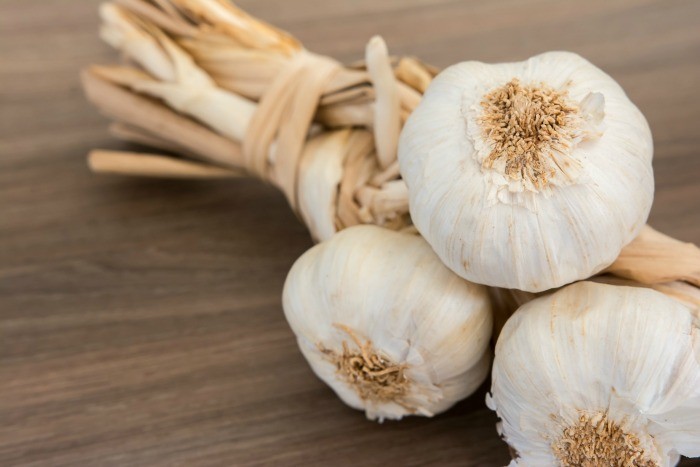
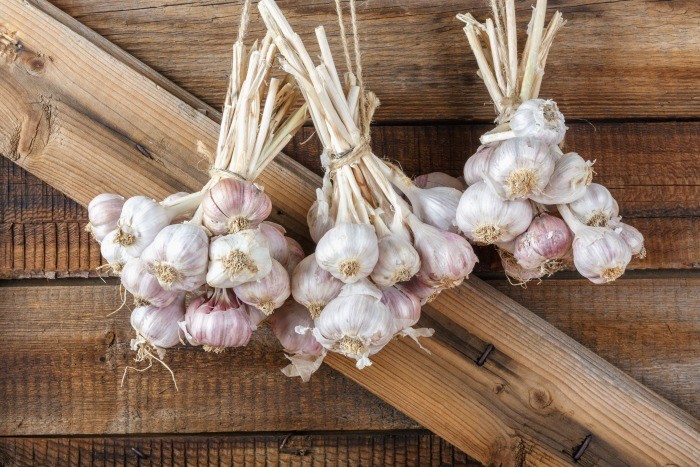
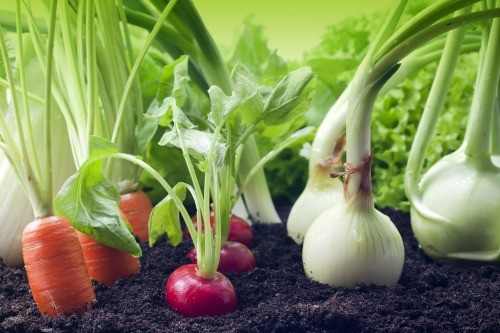
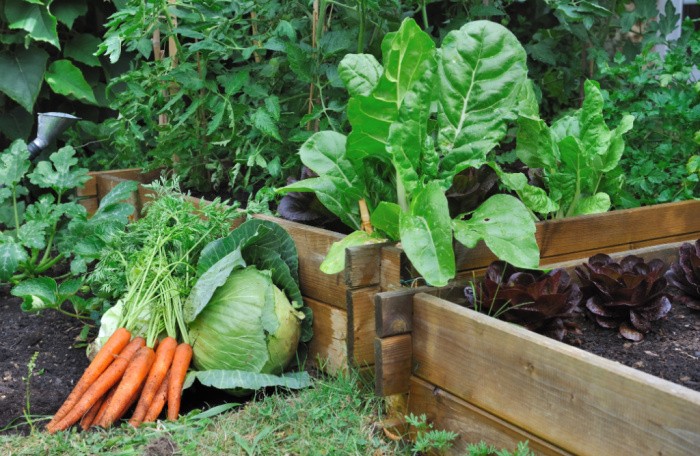
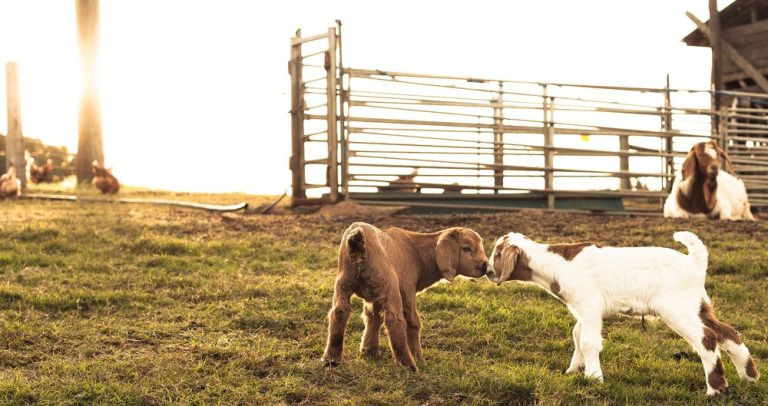
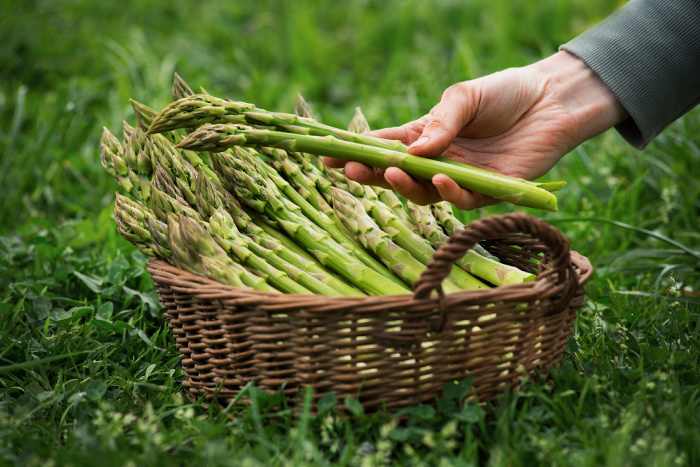
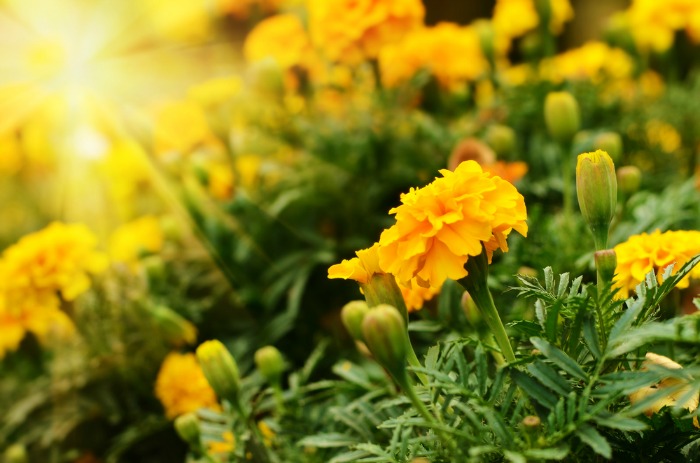
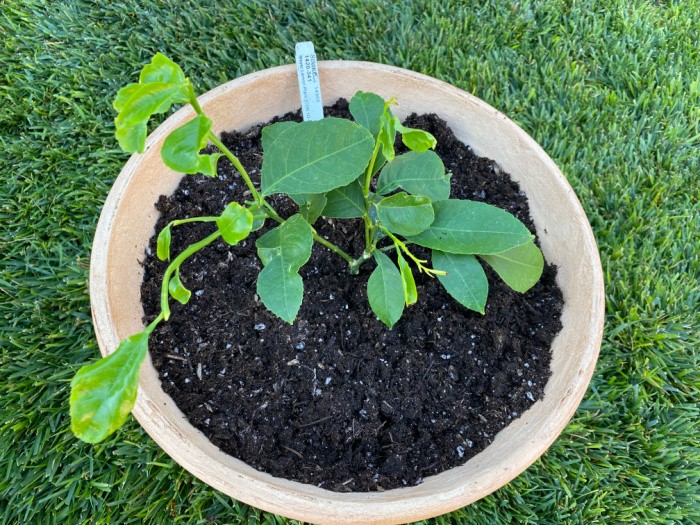














Several years ago I started planting my own garlic (when I had a large garden). Now I raise garlic in a 5 gallon bucket on my deck! When I first learned “how” to grow garlic, the man I received my “seed” from suggested using a 3/4″ to 1″ dowel rod with a line to indicate how deep to plant. It was so easy to make the holes for the bulbs. He also suggested I put a teaspoon of bulb food in the bottom.
I did the above and was AMAZED at how large the heads of garlic were – it almost looked like the size of elephant garlic they were so big.
I love using the scapes for stir-fries. I have also chopped and frozen scapes for use in soups and stews later on.
Hi Leanne, oh my gosh, I have got to try the 3/4″ to 1″ dowel rod!! I will try the bulb food in the hole next time, I love it! Thanks for this awesome tip!!! Linda
I’m flummoxed about the “dry, cool, BREEZY place to store the garlic. The only breezy places I can think of would be out in the open. Even the garage doesn’t get breezy. Help!
Hi Laura, maybe I should have said “airy” place to store the garlic bulbs. The basket gives it a little “breeze” or “air”, sorry about the confusion. Once you start growing garlic, you will never buy it again. Actually, everytime you open the garage it lets fresh air in, it’s not like we will put them in the wind, I hope this helps. Thanks for your patience, Linda
Linda,
Garlic and other members of the Allium family that includes Onions, shallots, scallions and leeks all contain a bit of Allicin, with garlic being the most potent. I discovered this a few years ago when we were gifted our first fresh garlic by a friend, and did some research on it when one of our cats tried his best to get to the garlic, which it turns out is toxic to cats and dogs, with as little as one clove being a serious risk.
We ended up tying strings to the plants and hanging them in our granary, where they dried up nicely
The wife and I are also rarely ill and the garlic and onions may help; but, getting my several pneumonia inoculations and our yearly influenza vaccinations is I think, also necessary. I think I may try your recipe, since it does sound pretty good.
We also love the garlic scapes. Chopped and baked/roasted on a cookie sheet with Olive Oil & Asparagus is one of our favorites.
Here the rule of thumb is that we plant on October 10th and Harvest on the 4th of July. I missed the date due to activities and weather, so we’re going to try in 5-gallon buckets in the green house and cross our fingers.
You mention baskets, and after trying a lot of things and recently purchasing a ton of candy onions from the local Amish produce auction, I needed a good way to store them. In the past we’ve reused the mesh bags we get with citrus; but, these were all getting rather ragged, so I made a lifetime investment in ”Royal Green Plastic Mesh Produce and Seafood, 24″, Package of 100” for around $16.00 from Amazon with free Prime shipping. I’ve already handed out a bunch of these to friends who garden and share with me.
https://www.amazon.com/Royal-Plastic-Produce-Seafood Package/dp/B017HJRZ9K/ref=sr_1_1?ie=UTF8&qid=1540988724&sr=8-1&keywords=Royal+Green+Plastic+Mesh+Produce+and+Seafood%2C+24%22%2C+Package+of+100&dpID=51dpsEH%252Bw0L&preST=_SY300_QL70_&dpSrc=srch
Sometimes a small investment helps a lot and weaving the garlic together might be a nice art project; but, takes too much time we can use elsewhere on the homestead.
Thank you so much!!! Linda
I somehow botched that Amazon URL so I’ll try it again, or you can search by the name I listed.
Royal Green Plastic Mesh Produce and Seafood, 24″, Package of 100
https://www.amazon.com/Royal-Plastic-Produce-Seafood-Package/dp/B017HJRZ9K/ref=sr_1_1?ie=UTF8&qid=1540989399&sr=8-1&keywords=Royal+Green+Plastic+Mesh+Produce+and+Seafood%2C+24%22%2C+Package+of+100
HI Ohio Prepper, thanks for the tip on these!!! Linda
Hi Linda. I have been growing the same Italian red, hard-necked garlic for about 50 (?) years from the initial head of cloves. I plant them all over my property. Nothing eats them.
Most of all I nip the seed that will come out the top like a spike until it opens. Clip that off as soon as you see it and you will get a bigger head. Leave some to go to seed and always leave some heads in the ground to regrow, next year. The one’s you left to go to seed with sprout a head of tiny cloves. These can also be planted but it will take two years for them to get to a decent size. therefore it is best to start with the biggest cloves you can get for the ones you will be uprooting for use. The ones you left with regrow next year.
I have given hundreds of heads of garlic to people for years. I also sold a lot at Farmer’s markets. The initial head of garlic i had growing from California to Montana. If you have good soil you can grow garlic. Poor soil and not enough water will lead to small heads. All you need is soil, water and feed. 2″ apart and 2″ deep. I have had garlic cloves sit on top of the soil in -0 temperatures and they survive anything. When you think of that it makes sense that when you consume garlic regularly it will help to keep you well. I am never sick. I do not get colds or flu. I say it is because I grow most of my food and eat lots of onions and garlic. I have lots of garlic growing in my flower beds as well.
If you don’t get it all out of the ground, and you shouldn’t, leave it and let it do it’s thing. Happy gardening.
Hi Diane, oh my gosh you are an inspiration to all of us!! I love this comment!! Oh my gosh, why wouldn’t we plant garlic? Linda
You, my dear Linda are the inspiration. This forum you have set up for all of us to learn from you and others is a wonderful thing. Indeed, a gift to us all from you. Thank you. Thank you just for being.
Diane
Hi Diane, you made my day!! Thank you from the bottom of my heart, Linda
Hi Linda! I was glad to see this post. We grow garlic and also are never sick! I hadn’t thought about that until I read this and just wonder if it’s the garlic or living a good life in general. Ha! We also love onions so the husband is happy when I’m sautéing garlic and onions because he know he will like whatever I make with them. We dry ours under our deck; hang them up and they dry pretty well in the Kansas heat. We can walk under our deck, so also hang onions there to dry out too.
Hi Paula, oh I can almost picture your onions and garlic hanging! I love onions and garlic! I think living a good life and a happy life keeps of well too! Linda
One of the things that helps give your garlic a head start is to soak your bulbs overnight ant then plant as usual. . I have grown garlic for years in the same pots that I grow my potatoes to keep out the mice and voles that like to eat them. Using the bulb food in every planting hole is a good idea.
Hi Cheryl, oh I like hearing this tip! I will try planting mine in my potato pots, great idea! Love this, Linda
Linda! I grow Music also! It’s my favorite, especially for fermented or black garlic (yep, I even invested in a special garlic-fermenting pot–it sits for 2-week periods doing its thing, time to load it now). Music garlic comes out chewy and sweet–I call them my healthy gumdrops. And no garlic breath, either.
For storage–I found the plain garlic heads just wouldn’t store well for me, more than a couple months. So I “pickle” garlic for long-term storage. Separate and peel the cloves, pack them into canning jars (I use either 1/2 or 1 cup jelly jars) and fill up with very hot white vinegar, enough to cover the cloves. Adjust lids and allow to cool (metal lids can be affected by the vinegar, so I use the Tattler lids/rubbers). They seem to last well over a year in the pantry; can also be refrigerated. When you need some, pull out the cloves you want, rinse well, and carry on–there will be no vinegar taste!
I’m another fan of the scapes, either in soups/stews/stir-fry or just sautéed in butter. If a flower head does get by, those tiny seed-cloves can be rubbed loose from the head, any dry matter blown away, and the garlic “seeds” simply dropped into soup or stew.
Another after-harvest treat is roasted garlic. Take a big head of garlic per person–slice off the top so a little of the clove is exposed (no peeling needed otherwise except to remove any dirt). Set the heads on their root ends in a baking dish and pour a little olive oil on top of each one. Bake for about 20 minutes or until they’re soft. Just squeeze the softened garlic out, spread on warm bread, meat, veggies–or just eat it! (You can also use peeled cloves–toss in olive oil, spread in a baking dish, and bake as above–check and stir after 10 min. or so.)
Oh, and the little planting “dibble”… I’m lazy, I just use my finger, it’s about the right length!
Hi Rhonda, oh my gosh, I want to pickle some garlic now! YUMMY! Garlic gumdrops, I need to make those! I love baked garlic, wow, life is good with garlic! Linda
Please tell us what bulb food is.
Hi Melissa, it is fertilizer, I use 10-10-10 fertilizer from any garden center. Linda
I have wild Garlic growing in my yard. You should smell it when the grass is mowed. It smells like a big
salad. I also have wild onions growing too.
Hi June, oh my gosh, what a blessing to have wild onions and wild garlic growing! I can almost smell them right now!!!!! Linda
Linda,
I grow Purple Queen softneck garlic in my low hoop houses. Since I’m in 8b I usually plant around the end of October. My hoop houses are usually covered with plastic during winter (well, sometimes–our winters are so mild they sometimes don’t get covered). Garlic is a great companion plant (NOT for peas or beans) so I interplant my garlic with broccoli. The garlic repels aphids and other pests and enhances the flavor of the broccoli. I usually don’t braid it when I harvest–just let it dry in a wicker basket. Then I store the bulbs we’re going to eat in mason jars in my pantry. I store the bulbs I’m going to use for the next year’s planting in my refrigerator’s veggie drawer. It usually lasts us until the next planting. I’ve never tried bulb food but I will this year. Also, I usually plant my bulbs 4″ deep and use a 2″ layer of small bark chips for mulch. Harvest time is most often mid-July, though I have planted in late September and harvested in June. I’ve found that even if the bulbs put up shoots, our winters are so mild they aren’t harmed. If it looks like we’ll get a hard freeze I cover them. But the broccoli grows all winter long and usually the garlic does too. Scapes are the BEST in stir fries.
Thank you for the soup recipe. I’ll try that one for sure, using fresh garden grown veggies.
Hi Ray, making soup with homegrown veggies is the best. I’m hoping to plant these garlic bulbs in our new location. I will try planting some 4 inches deep, I love garlic, this is so awesome! I will look for purple Queen garlic, I love trying different things. I will store some in my pantry like you mentioned and in the veggie drawer. Thank you!! Linda
Linda, about using straw for mulch–I can’t use it because our winds blow it off the garden beds. And if I keep it wet enough so it doesn’t blow away my soil under it is then too wet for garlic. I use small barks chips instead and my garlic does great. I’ve taken to planting garlic “seeds” and onion sets around the borders of my raised beds. They, along with marigolds and nasturtiums I interplant help to keep insect pests away from my crops.
Also, Broccoli tastes better when planted with garlic. Your garlic chicken noodle soup is excellent though Jane said it is too strong for her.
Hi Ray, thanks for the 5 stars, my friend. The garlic soup is when we’re sick! LOL! We need a lot of garlic when we’re coming down with something. I love hearing how your natural pest control tips!! I love flowers and the bees love them. I know I have had neighbors use straw for mulch, it;s not my favorite I would do woods as well. Linda
I remember my dad planting garlic each year. One year he planted by our neighbors yard and the boys of that family playing ball in the driveway and they threw it over the fence and it landed in my dad’s Garlic patch. The jumped over the fence and Oh I had never seen him so mad. We didn’t have garlic that year and he made the neighbors to pay for new garlic and a higher fence. He was furious because he loved his garlic.
The boys were not allowed to play in the driveway anymore
HI Jackie, thank you for the 5 stars, my sweet friend! Thanks for sharing the garlic story!! Oh my gosh, the garlic patch!! I had cats using my raised garden beds as a litter box one year that’s about as close to the garlic story I have! I was not happy. But, I never knew if it was a neighbor’s cat or just a cat roaming around the neighborhood. I got some free coffee grinds from a local coffee shop and sprinkled them around. Never saw a cat again. Life is good! Linda
I’ll add to my last year’s post… I have two new ideas for using garlic. One is with the scapes. I had put some on to sauté in butter, but something came up that I had to tend to and it was almost half an hour before I got back to them. The scapes were brown and nearly crisp. I almost tossed them, but popped on in my mouth just to see… And it was *wonderful!* A little chewy, some just crisp, and beautifully caramelized. I now do it on very low for 30-45 minutes, and stir them once or twice.
The other is garlic fermented honey. Peeled garlic cloves, just slightly crushed–half-fill a jar, then cover the cloves with raw honey, leaving an inch or so of head room before capping. Once or twice a day or so, turn the jar over; whenever the jar has been right side up for a while, loosen the cap momentarily to “burp” it. After a while (several weeks, I think) it won’t burp any more, and the jars can be put away in the pantry for another month or two (I think it was 6 months before I remembered to try either the honey or the garlic). Supposed to be very good for colds, sore throat, etc., to take a spoonful of the garlic infused honey–and the garlic itself is quite tasty, nothing like eating raw garlic!
Hi Rhonda, thank you for the 5 stars, my friend. I’m trying to refurbish old posts but I keep the comments because they also help others. Now I want to try doing the scapes, I can almost taste them!! The fermented garlic honey I need to make! I love learning new things. Linda
I forgot another one I did this summer–lacto-fermented garlic scapes! The tenderest ones I curled and twisted up into little “wreaths” (most ends are already looped)–others I cut into jar-lengths and packed into the jars. Then used the usual fermenting brine to fill the jar. Added a covering of plastic wrap before screwing on the caps lightly (so they could vent as they fermented–also good reason for setting them on a tray, in case they overflow!) They were ready to eat in 10 days, but they are now quite spicy and yummy.
Hi Rhonda, now my mouth is watering! I need to make these! Linda
I pretty much just hang my garlic with some in the kitchen and some on the back porch that is covered and I kinda seal in during winter.
Wife wants me to do so elephant garlic next year. Dunno anything about it but why not
Hi Matt, oh I love hearing this, I love trying new varieties!! Linda